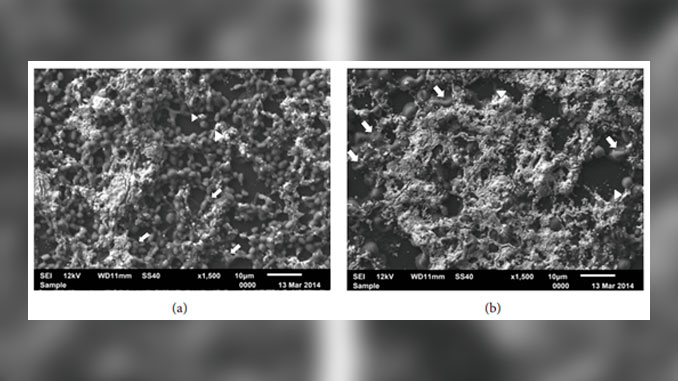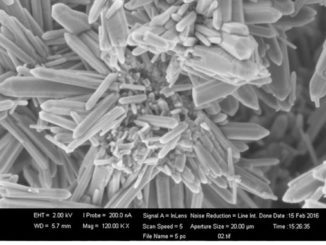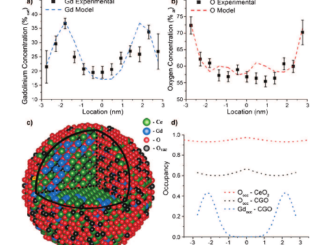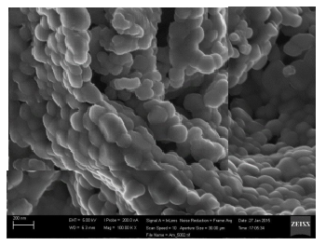
Writers: Amanda F. Wady, Ana L. Machado, Camila C. Foggi, Camila A. Zamperini, Valtencir Zucolotto, Eduardo B. Moffa, Carlos E. Vergani
Keywords: Nanoparticles; Silver; Staphylococcus aureus; Candida spp
Abstract: An AgNPs solution was synthesized by chemical reduction, characterized, and tested against Candida glabrata, Candida tropicalis, Staphylococcus aureus, and methicillin-resistant Staphylococcus aureus (MRSA). Minimum inhibitory (MICs) and minimum fungicidal/bactericidal concentrations (MFC/MBC) were determined on planktonic cells. Also, total biofilm mass was determined by crystal violet (CV) staining and morphological changes by scanning electron microscope (SEM). MICs for C. glabrata, C. tropicalis, S. aureus, and MRSA were 15.63, 3.91, 1.95, and 1.95 µg/mL, respectively. MFC for C. glabrata was 62.5 µg/mL and for C. tropicalis 15.63 µg/mL The same MBC (3.91 µg/mL) was observed for S. aureus and MRSA. CV assay showed that the AgNPs (1000 μg/mL) promoted reductions in biofilm mass of ~60% for C. glabrata and ~35% for C. tropicalis. A reduction of ~20% in C. tropicalis biomass was also observed at the concentration of 3.91 µg/mL. No significant effect on total biomass was found for S. aureus and MRSA. SEM images revealed that C. glabrata and C. tropicalis biofilm cells, exposed to the AgNPs (1000 μg/mL), had an irregular and shriveled appearance. AgNPs solution exhibited considerable antimicrobial activity against important fungal and bacterial pathogens, associated with several oral and systemic diseases, and has potential as an antimicrobial agent.




